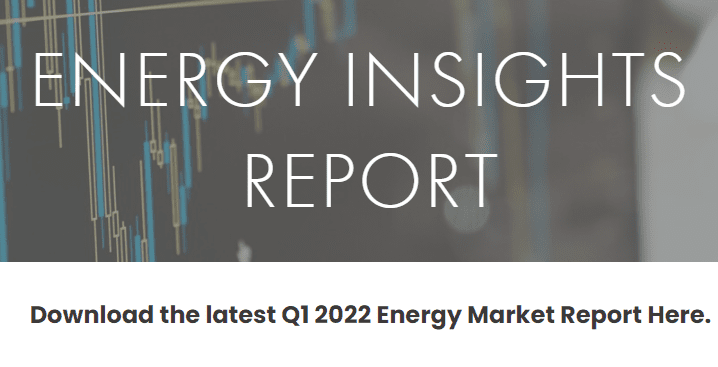Many of our SME and larger clients are extremely concerned about the impact of the current energy price crisis on their business costs, especially those in sectors such as manufacturing and engineering where energy costs are a huge part of the business overheads. Even for other sectors however, energy costs have always been a major overhead for any business, so the current situation is top of mind for all business owners and boards.
Our client Advantage Utilities is a business energy consultancy that considers every technology and procurement option to help its clients cut costs and manage energy usage whilst exploring self-generation opportunities to reduce your carbon footprint and meet net zero goals.
They produce a free Quarterly Report on the energy market for businesses, where they take a detailed look at the current International and UK market drivers. These are the factors that will dictate the trading opportunities in 2022 and ultimately the cost of energy over the next 12 months.
Uncertainty and volatility are always present in the energy market. This means it is important to be informed about what could affect your business energy budget – more information drives smarter decisions.
Key issues covered in this month’s report, just released, include:
- The Russian Bear Growling or Biting? Implications on energy prices of an invasion of The Ukraine. The conflict playing out between Russia and Ukraine is one marked by land borders and shaped by strategic influence. Europe relies on Russia for around 35% of its natural gas requirements. Escalating tensions give rise to fears that Russia could effectively ‘weaponise’ gas by restricting supplies to Western Europe in the event that threats to impose economic sanctions are carried out in response to any Russian invasion of Ukraine.
- Cavalry coming in the shape of increased gas supply? Cavalry coming in the shape of increased gas supply? Previous versions of this report have alluded to how the U.S could yet play a key role in maintaining European gas provisions in the form of LNG exports. The U.S. are something of a sleeping giant when it comes to shale gas production, and we are finally starting to see this come to the fore, with the prospect of more to come. Ironically, the UK banned its own fracking and shale gas production amid safety concerns, however, we are evidently happy to import the same product from overseas.
- Us lng and nordstream. In truth the market has been precariously volatile for some time now, with the volatility seemingly underpinned by European storage levels remaining below historic levels, and Gazprom controlled facilities remaining depleted. The UK has minimal storage availability largely owing to the decision to abolish our Rough storage facility taken in 2017. This has been partially offset by stronger than anticipated flows from Norway and thankfully mild weather has generally prevailed for much of the winter. It is also important to note that the market is already well oversubscribed relative to key fundamentals such as crude oil and coal. Further uncertainty remains over a potential conflict between China and Taiwan with global geo- political uncertainty the overriding and imponderable factor, meaning the word used more than ever in recent times, “unprecedented”, is more apt than ever.
What can be done to mitigate the risk?
There is an array of procurement options which can be facilitated ranging from traditional fixed-term contracts, through to ‘blend and extend’ agreements, quarterly purchasing and variations of flexible procurement strategies. The suitability of each approach will be dependent on a number of factors including an organisations energy profile, appetite for risk and the importance of budgetary certainty.
Regardless of procurement strategy, higher wholesale and corresponding grid prices, also mean that the financial incentive for on-site generation is greater than ever, with the likes of solar and wind solutions having the additional benefit of reducing an organisations carbon footprint. With various funding options available, it may be realistic to implement a solution which drives savings without any capital outlay or ongoing risk.
Equally in a year when ESOS III (Energy Savings Opportunity Scheme) audits are mandatory for qualifying organisations, now may be an excellent time to consider having a professional energy audit, with the aim of driving improvements in efficiency, engaging with staff and ultimately reducing overall energy spend.

